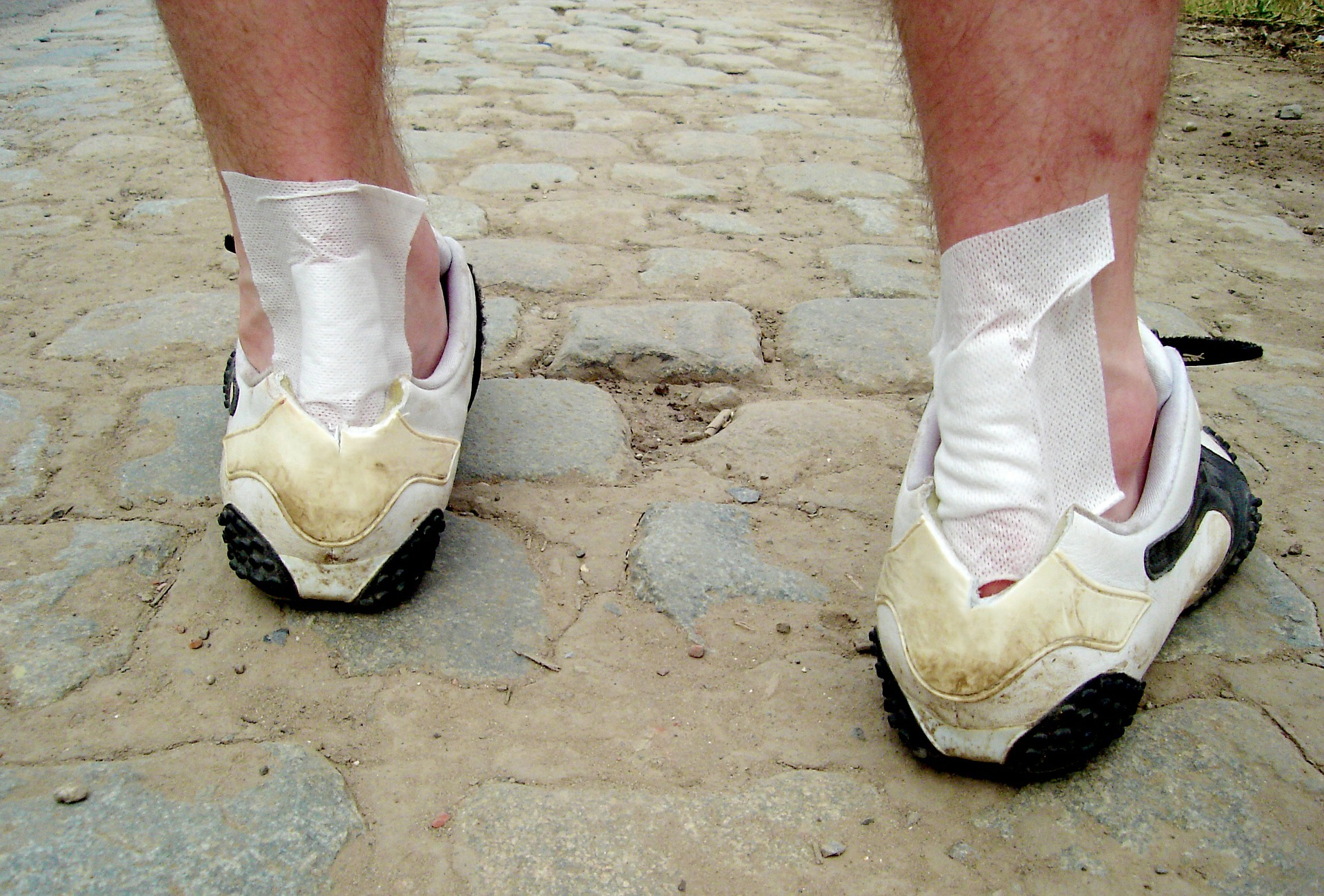
Plantar Fasciitis In Adults
The plantar fascia is a ligament-like structure which runs from the bottom of the heel bone (the calcaneus) to the front of the foot (see picture to the right). Plantar fasciitis – inflammation of the plantar fascia – is one of the most common causes of heel pain in adults. It occurs when excessive strain is placed on the plantar fascia usually as a result of poor foot function: either a flat foot (over-pronation) or a high arched foot (over supination). Jumping or prolonged standing can also cause increased tension.
The pain is often worse when stepping onto the foot, particularly when first getting out of bed in the morning or getting up after being seated for some time.
 Treatment For Plantar Fasciitis
Treatment For Plantar Fasciitis
Once your heel pain has been assessed by an Orthopaedic Podiatrist, they will determine the cause and any appropriate treatment. Some rest is usually advisable; excessive and repetitive heel impact from jumping and running should be avoided, but a complete lack of physical activity can lead to stiffening and a return of pain, and is not recommended.
The most common treatment will be in the form of custom-made orthotic insoles that fit inside your shoes. These will be custom-made to your foot to help reduce the tension in the plantar fascia while you walk and usually give very good results.
Special splints may be helpful when worn over night, providing pain relief and a gentle stretch.
If the plantar fascia is too tight, stretching excercises can help. Your Orthopaedic Podiatrist will show you how to do this. Additional stretching aids are also available.
If your plantar fasciitis has become long term and seems to have resisted previous treatments, Extracorporeal Shockwave Therapy can be effective for treating chronic plantar fasciitis / heel pain.
Long Term Heel Pain In Adults – Chronic Plantar Fasciitis
Custom-made orthotic insoles that fit inside your shoe can correct poor foot function and help to reduce tension in the plantar fascia while you walk. These often give very good results. However, if your pain is resistant to treatment, or chronic, and your plantar fasciitis has become long term, Swiss Dolorclast®, or Extracorporeal Shockwave Therapy, is often an effective treatment for your chronic plantar fasciitis / heel pain.
Extracorporeal Shockwave Therapy, or ESWT, delivers focused shock waves to the body. This induces microtrauma to the tissue affected by plantar fasciitis, triggering a healing response within the body.
There is both a high-energy and low-energy form of ESWT; and both forms of shockwave therapy can be used in the treatment of plantar fasciitis.
Typically, low-energy shockwave treatments are given as a series of three or more treatments.
Benefits Of ESWT
Benefits include:
- Quick results
- Clinical studies show a 60 – 70% success rate
- Significant reduction in pain
- Improved quality of life
- Outpatient treatment – no need to stay in hospital
- No anaesthesia – no injections
- Non-invasive – no cuts or stitches
- Virtually painless after treatment
Extracorporeal Shockwave Therapy is not yet widely available in the UK, however we have one of the first machines in the UK at Elland Hospital, which allows us to perform this advanced technique.
What will happen when I have this heel pain treatment?
The treatment is fast and effective – the pain is located by touch, a gel is applied to the problem area and the shock waves are delivered to the foot. It is a simple straightforward technique:
- Locating pain by touch
- Marking the treatment area
- Applying the contact gel
- Delivering the treatment – the probe is pressed against the heel
The treatment lasts for 5-10 mins each sitting and 3 to 5 treatments at a weekly interval are normally recommended.
Recovery
Following the procedure, patients are asked to rest and apply ice packs to the treated area for a few hours. Within 24 hours, normal activities can be resumed. Significant pain relief is noted by the majority of patients within 3 weeks of the procedure.
